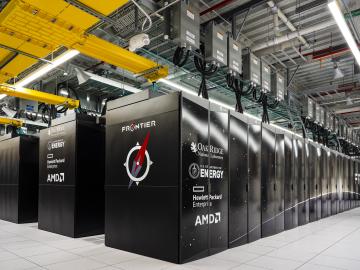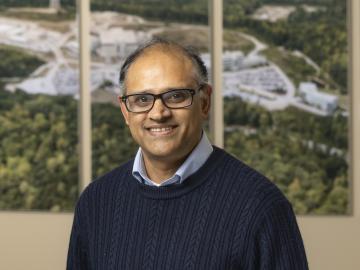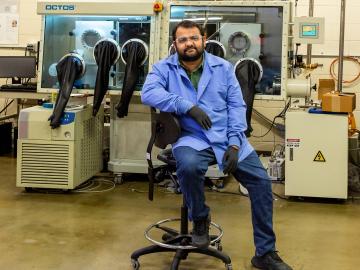
Filter News
Area of Research
- (-) Energy Science (158)
- (-) Neutron Science (33)
- (-) Supercomputing (92)
- Advanced Manufacturing (8)
- Biological Systems (2)
- Biology and Environment (99)
- Biology and Soft Matter (1)
- Building Technologies (2)
- Computational Biology (1)
- Computational Engineering (2)
- Computer Science (12)
- Electricity and Smart Grid (2)
- Energy Sciences (2)
- Fuel Cycle Science and Technology (1)
- Functional Materials for Energy (2)
- Fusion and Fission (35)
- Fusion Energy (13)
- Isotope Development and Production (1)
- Isotopes (6)
- Materials (97)
- Materials for Computing (14)
- Mathematics (1)
- National Security (28)
- Nuclear Science and Technology (39)
- Nuclear Systems Modeling, Simulation and Validation (2)
- Quantum information Science (9)
- Sensors and Controls (1)
News Topics
- (-) Advanced Reactors (7)
- (-) Artificial Intelligence (45)
- (-) Bioenergy (34)
- (-) Energy Storage (77)
- (-) Hydropower (3)
- (-) Microelectronics (1)
- (-) Microscopy (15)
- (-) Nuclear Energy (13)
- (-) Quantum Science (31)
- (-) Security (11)
- 3-D Printing/Advanced Manufacturing (84)
- Big Data (28)
- Biology (24)
- Biomedical (33)
- Biotechnology (6)
- Buildings (39)
- Chemical Sciences (18)
- Clean Water (10)
- Composites (18)
- Computer Science (110)
- Coronavirus (30)
- Critical Materials (12)
- Cybersecurity (15)
- Environment (74)
- Exascale Computing (27)
- Fossil Energy (3)
- Frontier (33)
- Fusion (3)
- Grid (41)
- High-Performance Computing (45)
- Isotopes (2)
- Machine Learning (22)
- Materials (56)
- Materials Science (57)
- Mathematics (4)
- Mercury (3)
- Molten Salt (1)
- Nanotechnology (23)
- National Security (11)
- Neutron Science (123)
- Partnerships (12)
- Physics (17)
- Polymers (14)
- Quantum Computing (20)
- Simulation (18)
- Software (1)
- Space Exploration (8)
- Statistics (1)
- Summit (44)
- Transportation (71)
Media Contacts

Innovations in artificial intelligence are rapidly shaping our world, from virtual assistants and chatbots to self-driving cars and automated manufacturing.

Like most scientists, Chengping Chai is not content with the surface of things: He wants to probe beyond to learn what’s really going on. But in his case, he is literally building a map of the world beneath, using seismic and acoustic data that reveal when and where the earth moves.

ORNL scientists found that a small tweak created big performance improvements in a type of solid-state battery, a technology considered vital to broader electric vehicle adoption.

Having passed the midpoint of his career, physicist Mali Balasubramanian was part of a tight-knit team at a premier research facility for X-ray spectroscopy. But then another position opened, at ORNL— one that would take him in a new direction.

An innovative and sustainable chemistry developed at ORNL for capturing carbon dioxide has been licensed to Holocene, a Knoxville-based startup focused on designing and building plants that remove carbon dioxide
For the third year in a row, the Quantum Science Center held its signature workforce development event: a comprehensive summer school for students and early-career scientists designed to facilitate conversations and hands-on activities related to

A study led by researchers at ORNL could uncover new ways to produce more powerful, longer-lasting batteries and memory devices.

Nonfood, plant-based biofuels have potential as a green alternative to fossil fuels, but the enzymes required for production are too inefficient and costly to produce. However, new research is shining a light on enzymes from fungi that could make biofuels economically viable.

A study led by Oak Ridge National Laboratory researchers identifies a new potential application in quantum computing that could be part of the next computational revolution.

Marm Dixit, a Weinberg Distinguished Staff Fellow at ORNL has received the 2023 Rosalind Franklin Young Investigator Award.


